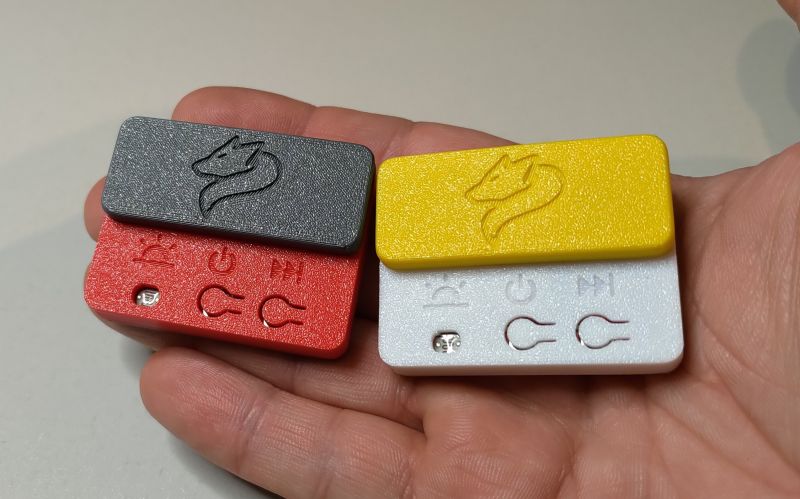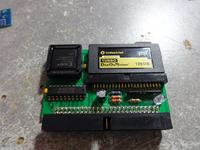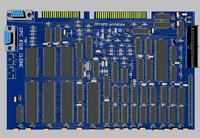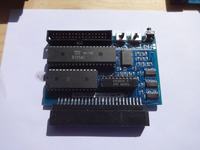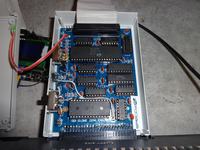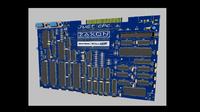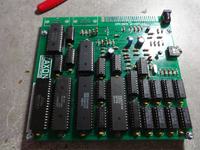
Hello, I would like to introduce my Amstrad 464 microcomputer clone.
Why did I make it? Well, mostly for educational purposes, besides, the original Amstrad 464 is awfully long and takes up a lot of desk space.
Mine takes less. ;)
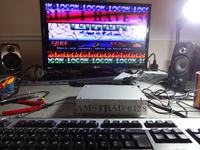
Diagram: Original diagram of Amstrad 464
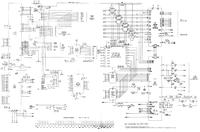
I redraw it in the Diptrace program, the record is 16x15 cm. Made in China.
Changes from the original:
I changed the original dedicated chip 40007 used in CPC 464 to 40010 used in CPC 6128.
I added the PS / 2 keyboard interface layout courtesy of my friend Gerald from a friendly forum about CPC (the board in my implementation)

I did not make a layout that supports printer port.
Activation:
After assembling the prototype board, errors appeared, of course.
The basic mistake was that I inversely connected the power to the 4164 memory chips (1bit dram). My mistake, because I drew the memory wrong while making the base of elements in Diptrace. Instinctively I assumed that the 16-pin DIP circuit is powered like in the 74xx series.
The second error was that I made the clock signal generator based on the schematic of the first version 464, based on the 7400, and not as in the subsequent versions on the 74hcu04.
On top of that, there were some missing connections.
After corrections by kynar and adding a few "spider" layouts, the album was launched.
After launching the CD as Amstrad 464 and under the pressure of my friendly CPC forum, I converted it to the 6128 version. I added another 64 kb RAM, changed the ROM. Of course, the album looks terrible after such modifications.
The floppy interface is still external but is working on a new board version that will have it. As well as the keyboard, mouse and expansion card slots.
Action videos:
Version 464
https://www.youtube.com/watch?v=51Iymj_V_aY&list=UUq0qTOm1ux2WOhEDPbe0Ofg
Version 6128
https://www.youtube.com/watch?v=CiJKtdmkNKE&list=UUq0qTOm1ux2WOhEDPbe0Ofg
Cool? Ranking DIY



